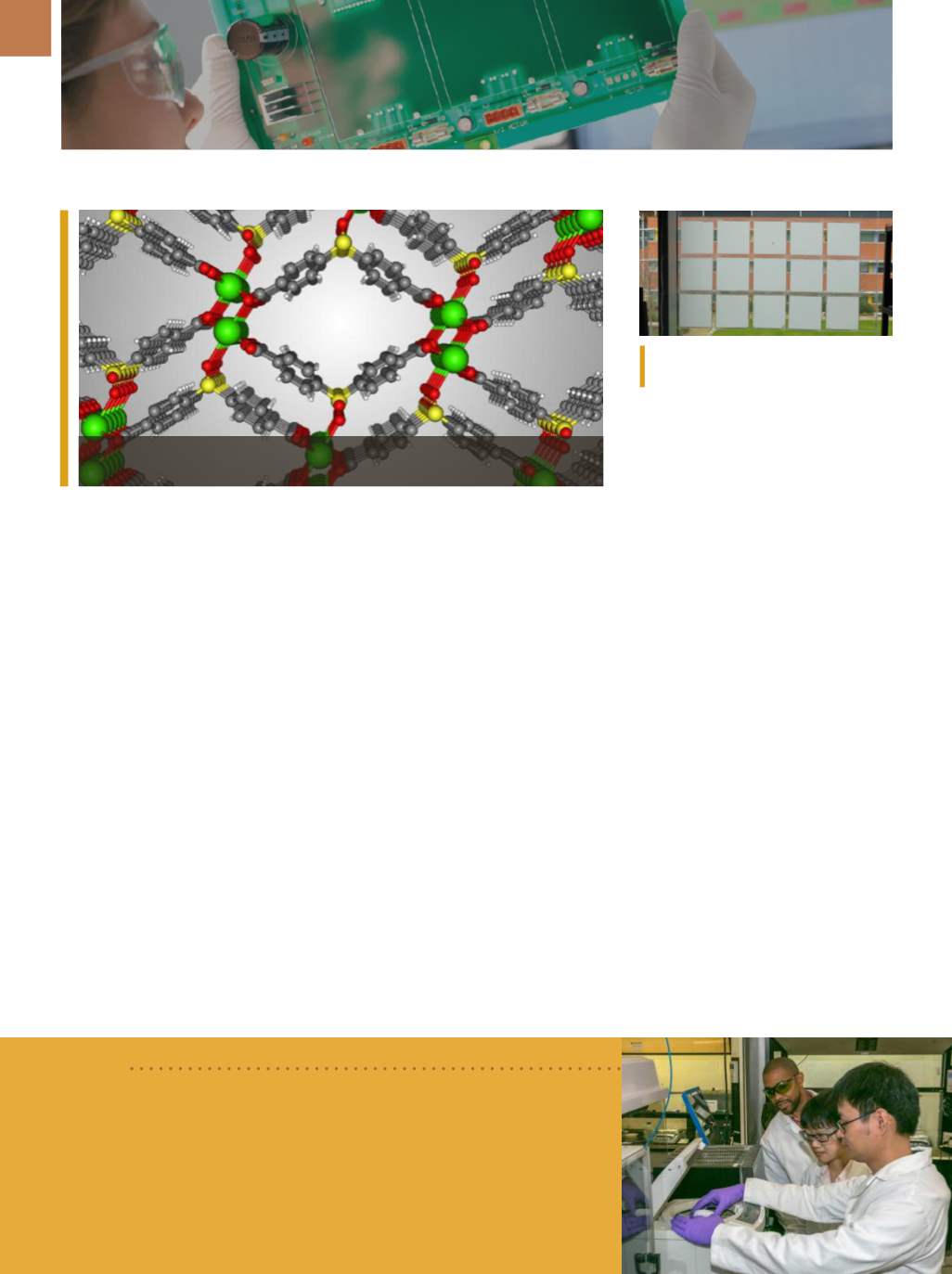

A D V A N C E D M A T E R I A L S & P R O C E S S E S | S E P T E M B E R 2 0 1 6
1 2
NEW MATERIAL NETS BETTER
NUCLEAR FUEL RECYCLING
An
international
collaboration
including researchers from the DOE’s
Pacific Northwest National Laboratory,
Richland, Wash., and Lawrence Berkeley
National Laboratory, Calif., is investigat-
ing whether metal organic frameworks
(MOFs) could improve nuclear fuel recy-
cling by capturing radioactive xenon and
krypton at ambient temperature, avoid-
ing the expensive, energy-intensive
cryogenics necessary in current practice.
MOFs contain tiny pores as small as a
single molecule. When gaseous mixtures
are passed through MOF walls, certain
gases adsorb to the material, while the
rest sift through.
To determine which MOFs out of
125,000 possibilities could be used for
xenon and krypton separation, com-
putational chemists used machine
learning techniques to evaluate the
materials based on seven predictive
characteristics. They identified SBMOF-1
with a pore size close to that of a xenon
atom as the best candidate. Laboratory
tests confirmed that SBMOF-1 trapped
xenon until the gas saturated the mate-
rial, and in the absence of xenon it cap-
tured krypton, indicating that a mixture
could be passed through SBMOF-1 twice
to capture both gases. In high humidity,
SBMOF-1 retained more than 85% the
amount of xenon as in dry conditions,
and after 10 cycles of vacuuming, it col-
lected just as much xenon as in the first
cycle, indicating a high degree of stabil-
ity for long-term use.
pnnl.gov, lbl.gov.
NOW YOU SEE IT,
NOW YOU DON’T
Researchers at the University of
Cambridge, UK, developed a type of
smart glass that switches from trans-
parent to opaque and back using mini-
mal energy. The glass is embedded with
Smectic A composites, which can be
changed from clear to cloudy millions
A molecular model of a newMOF that selectively traps xenon, a gas released
during reprocessing of nuclear fuel.
Smart glass goes from clear to opaque
and back again, millions of times.
BRIEF
A team of researchers from
Lawrence Livermore National Laboratory,
Calif., and
University of California, Santa Cruz
devised a method for dou-
bling the performance of 3D-printed graphene-base supercapacitors. The
technique involves sandwiching lithium ion and perchlorate ion between
layers of graphene in aerogel electrodes, substantially improving electrode
capacity while maintaining an excellent rate capability.
llnl.gov, ucsc.edu.
Cheng Zhu mixes ink material while colleagues observe. Courtesy of Julie Russell/LLNL.
of times and kept in either state for as
long as desired. The composites can be
produced in a roll-to-roll process and
printed onto plastic. The main com-
ponent of Smectic A, a smectic liquid
crystal, is comprised of molecules with
similar directional ordering arranged in
stacked layers, which confine themove-
ment of ionic additives.
Whenvoltage is applied,molecules
align themselves with the electric field,
rendering the glass transparent. When
voltage direction is changed, the ionic
additives disrupt the crystal layer struc-
ture, making the glass appear milky.
Increasing voltage frequency freezes
out ionic additive movement, reverting
the pane to transparent. These transi-
tions happen in a fraction of a second,
and when the voltage is cut, the mate-
rial remains in its current state until the
user changes it—so unless the material
is actively switching states, it requires
no power. “You could have smart win-
dows in an office building that auto-
matically become more or less opaque,
depending on the amount of sunlight
coming through,” explains Professor
Daping Chu. The smart glass could also
be used in automotive applications and
advertising.
www.cam.ac.uk.
EMERGING TECHNOLOGY


















